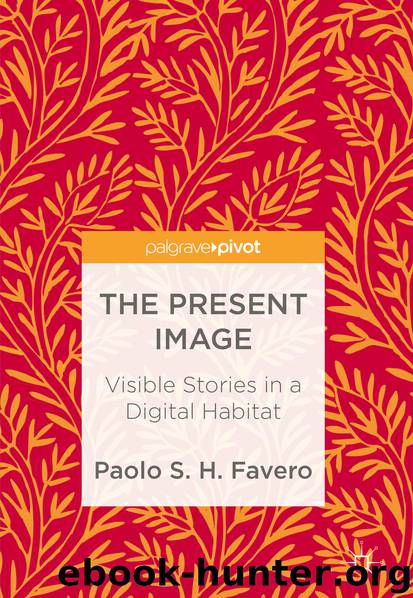The Present Image by Paolo S. H. Favero

Author:Paolo S. H. Favero
Language: eng
Format: epub
Publisher: Springer International Publishing, Cham
If we are to follow this approach, then the act of entering a space (no matter whether virtual or actual) is an act of acceptance that foregrounds a form of pre-reflexive observation and description rather than of rational explanation and analysis. Truth emerges here as an experience that is strictly dependent on the observer rather than on the thing out there: “We are in the realm of truth and it is ‘the experience of truth’ which is self-evident” (Merleau-Ponty 1962: xvi).
Such a reading breaks down the separation between the “I” and the world that was sustained by rationalism. We move instead toward that sense of oneness between the human and the world that makes up the fundament not only of Saint Augustine’s intuitions but also of many other knowledge systems, such as Buddhism, Hinduism, and various forms of animism (see von Glanesapp 1967; Knott 1999; Tucci 1992). The suspension of the distinction between the observer and the observed and between the self and the world combined with a sense of detached observation and acceptance of the world surrounding us is, in fact, a core coordinate in the practice of meditation (see Easwaran 1978). And it is with little surprise that we notice the extent to which VR and 360-degree images are used for teaching meditation techniques or for tackling traumatic, extraordinary events.14 As I mentioned in my introductory vignette, in my experience VR started giving me a “true” and valuable experience when I was made to float in the room.
Spinning further on this track, we may also be given a chance to go more in depth in the nexus technology and embodied experience. In her analysis of “telepresence”, Dolezal (2009) builds on Gallagher and Cole’s (1998) use of “body schema”—that system of motor and postural functions that constantly acts below the level of self-conscious intentionality and that “plays a key role in governing posture and movement” (Gallagher and Cole 1998: 131).15 Resonating with Merleau-Ponty’s idea that perception starts at a pre-reflexive level (we do not need to look at and conceptualize our hand in order to pick up and use a pair of scissors, said Merleau-Ponty), the body schema opens also up the space for conceptualizing the “entrance” of technology in our bodies. Becoming a part of our pre-reflexivity (like the cane of a visually impaired person or the spectacles of a reader with diminished sight), technologies can be incorporated by the sentient body and vanish from our perception. Umberto Eco addressed this process in the context of representation. In his 1988 essay on mirrors, he showed how social actors develop a capacity to use tools of representation. Explaining how human beings learn to use a mirror by teaching themselves to accept the rules of that particular instrument (in the case of the mirror a principle of inversion), Eco states, “once we understand that what we perceive is a mirror image, we start with the principle that the mirror tells the truth” (Eco 1988, p. 15). A principle that may
Download
This site does not store any files on its server. We only index and link to content provided by other sites. Please contact the content providers to delete copyright contents if any and email us, we'll remove relevant links or contents immediately.
| Anthropology | Archaeology |
| Philosophy | Politics & Government |
| Social Sciences | Sociology |
| Women's Studies |
Born to Run: by Christopher McDougall(7022)
The Leavers by Lisa Ko(6871)
iGen by Jean M. Twenge(5319)
Sapiens by Yuval Noah Harari(5259)
The Kite Runner by Khaled Hosseini(5032)
Spare by Prince Harry The Duke of Sussex(4989)
Bullshit Jobs by David Graeber(3985)
Machine Learning at Scale with H2O by Gregory Keys | David Whiting(3940)
Never by Ken Follett(3697)
Goodbye Paradise(3658)
Livewired by David Eagleman(3616)
Fairy Tale by Stephen King(3149)
Harry Potter 4 - Harry Potter and The Goblet of Fire by J.K.Rowling(2936)
A Dictionary of Sociology by Unknown(2921)
The Social Psychology of Inequality by Unknown(2893)
The Club by A.L. Brooks(2808)
Will by Will Smith(2729)
0041152001443424520 .pdf by Unknown(2718)
People of the Earth: An Introduction to World Prehistory by Dr. Brian Fagan & Nadia Durrani(2670)
